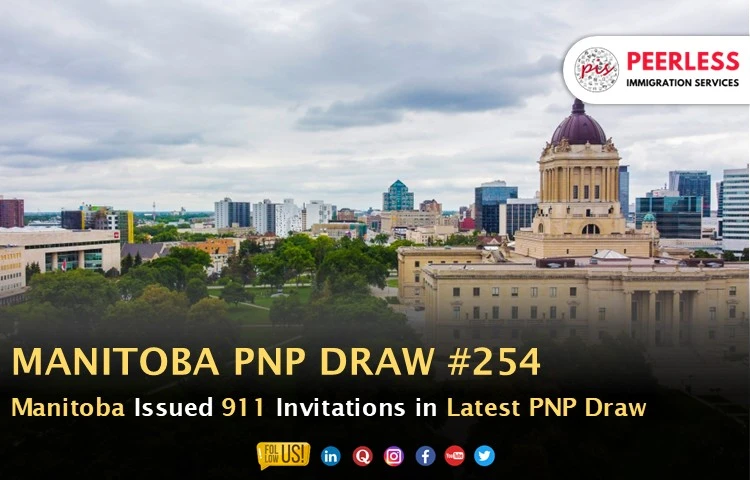
Express Entry Draw #367: 2500 Invitations Issued
Immigration, Refugees and Citizenship Canada (IRCC) conducted the latest round of invitations for the Express Entry pathway, i.e. Express Entry Draw #367, on September 17, 2025, issuing 2,500 invitations to candidates who have experience in primary occupations listed under the Education occupations (Version 1). The Comprehensive Ranking System (CRS) cut-off was 462.
Key Details of Draw #350
- Draw Number: 367
- Category: Education occupations (Version 1)
- Date and Time: September 17, 2025 at 15:36:53 UTC
- CRS Score Cut-Off: 462
- Invitations Issued: 2500
- Tie-Breaking Rule: July 09, 2025 at 04:24:19 UTC
List of occupations invited
- Elementary and secondary school teacher assistants
- Instructors of persons with disabilities
- Early childhood educators and assistants
- Elementary school and kindergarten teachers
- Secondary school teachers
Why did IRCC target education occupations in Draw #367?
IRCC targeted education occupations (e.g., elementary and secondary school teacher assistants, early childhood educators, and teachers) to address labor shortages in Canada’s education sector. Category-based draws like this one prioritize candidates whose skills align with Canada’s economic and labor market needs, as identified by IRCC.
What is the significance of the CRS cut-off score of 462?
The CRS cut-off score of 462 means only candidates with a Comprehensive Ranking System (CRS) score of 462 or higher who had experience in the specified education occupations were invited. This score is relatively moderate compared to previous draws, reflecting the targeted nature of category-based selections, which often have lower cut-offs than general draws.
How does the tie-breaking rule of July 9, 2025, at 04:24:19 UTC work?
The tie-breaking rule prioritizes candidates with the same CRS score (e.g., 462) based on when they submitted their Express Entry profile. Profiles submitted before July 9, 2025, at 04:24:19 UTC were given priority over later submissions, ensuring fairness when multiple candidates have identical scores.
Can I still be invited if my occupation is in education but my CRS score is below 462?
No, you would not have been invited in Draw #367 if your CRS score was below 462, even if you have experience in a targeted education occupation. To improve your chances for future draws, consider increasing your CRS score through higher language test results, additional work experience, or a provincial nomination (which can add 600 points).
How long does it take to process a permanent residence application after receiving an ITA?
IRCC typically aims to process complete Express Entry permanent residence applications within 6 months, provided all required documents (e.g., language tests, educational credentials, proof of funds) are submitted correctly. Delays may occur if additional information or verification is needed.
What qualifies as work experience in the targeted education occupations?
To qualify, you must have at least one year of continuous, full-time (or equivalent part-time) work experience in one of the listed occupations (e.g., elementary school teacher, early childhood educator) within the last 10 years. The experience must align with the National Occupational Classification (NOC) codes for these roles, as defined by IRCC.
Can I include my spouse or dependents in my application after receiving an ITA?
Yes, you can include your spouse or common-law partner and dependent children in your permanent residence application after receiving an ITA. Their inclusion may affect your CRS score (e.g., their language skills or education could add points) and the amount of settlement funds required.
What are the next steps after checking my Express Entry profile and finding an ITA?
If you find an ITA in your IRCC account:
- Accept the invitation within 60 days.
- Gather required documents, including language test results, Educational Credential Assessments (ECA), proof of work experience, medical exams, and police certificates.
- Submit your complete permanent residence application through the IRCC online portal.
- Pay the application fees.
Is Draw #367 specific to one of the Express Entry programs?
No, Draw #367 is a category-based draw targeting education occupations and is open to candidates from any of the three Express Entry programs: Federal Skilled Worker Program (FSWP), Canadian Experience Class (CEC), or Federal Skilled Trades Program (FSTP), provided they meet the occupation and CRS score requirements.














